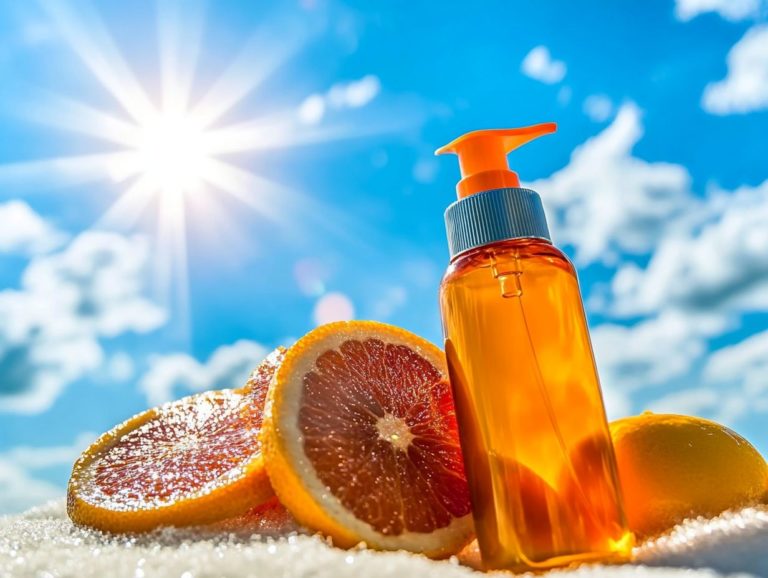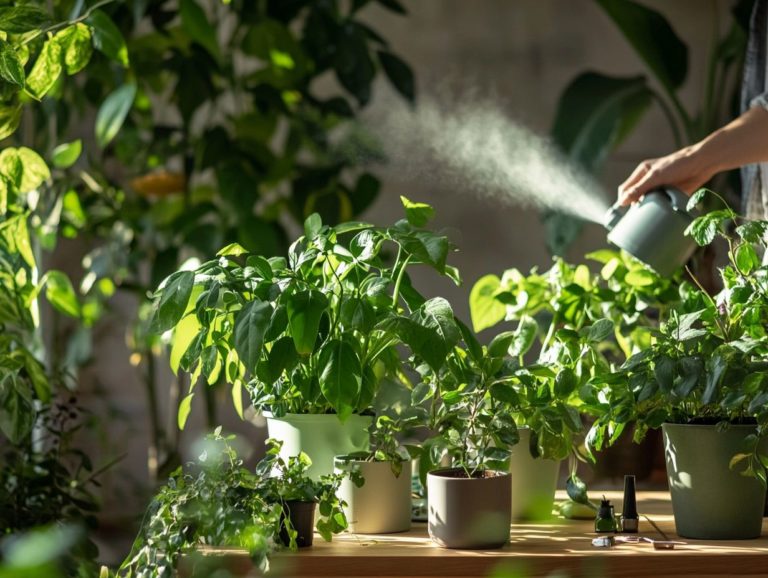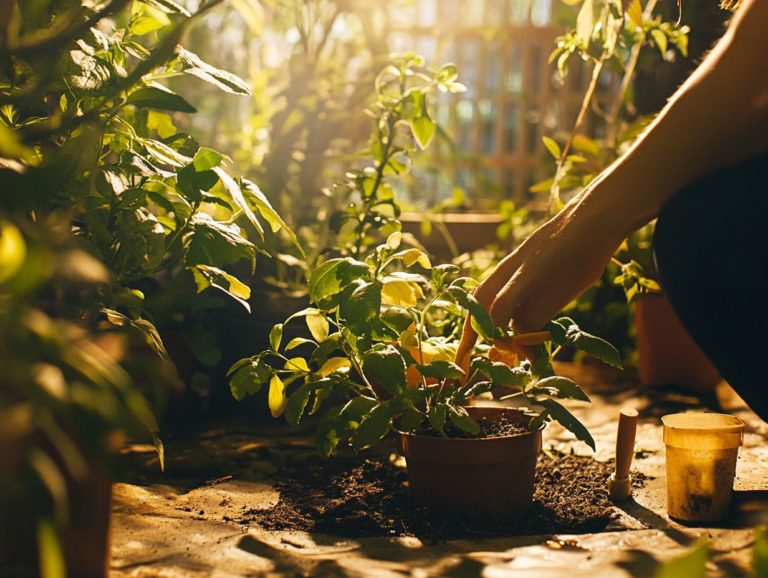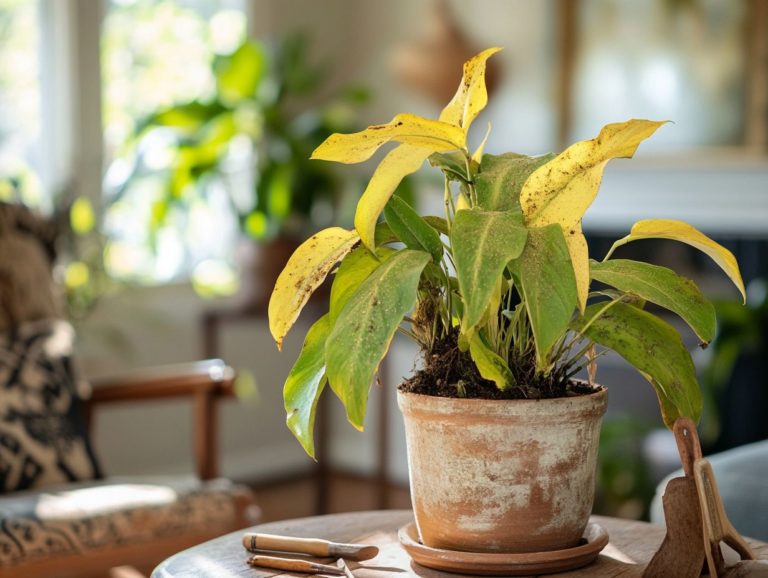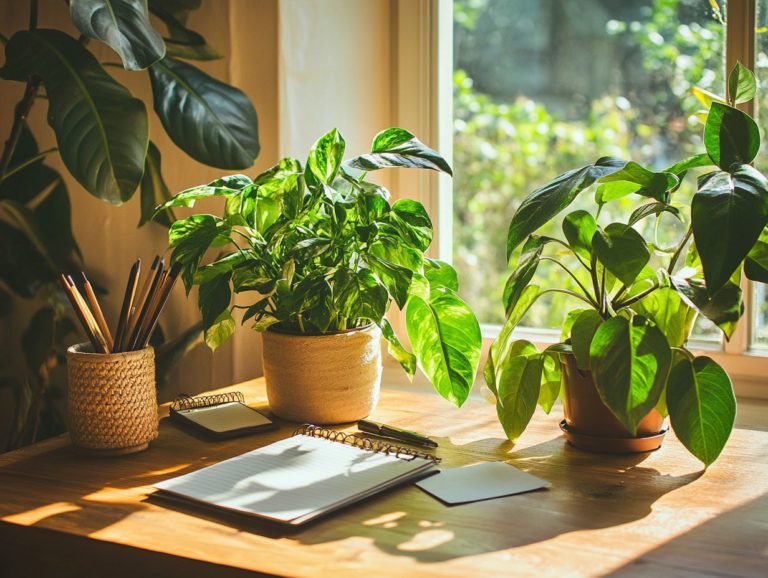Common Mistakes When Caring for Succulents
Succulents have emerged as cherished houseplants, celebrated for their distinctive shapes and minimal care requirements.
Even the most passionate plant enthusiasts can find themselves making common missteps that impede growth.
This guide delves into the essential traits of succulents, sheds light on frequent care errors from overwatering to inadequate lighting and provides invaluable tips to ensure your plants thrive.
Whether you’re an experienced succulent aficionado or just starting your journey, this guide will empower you to help your green companions flourish.
Contents
Key Takeaways:
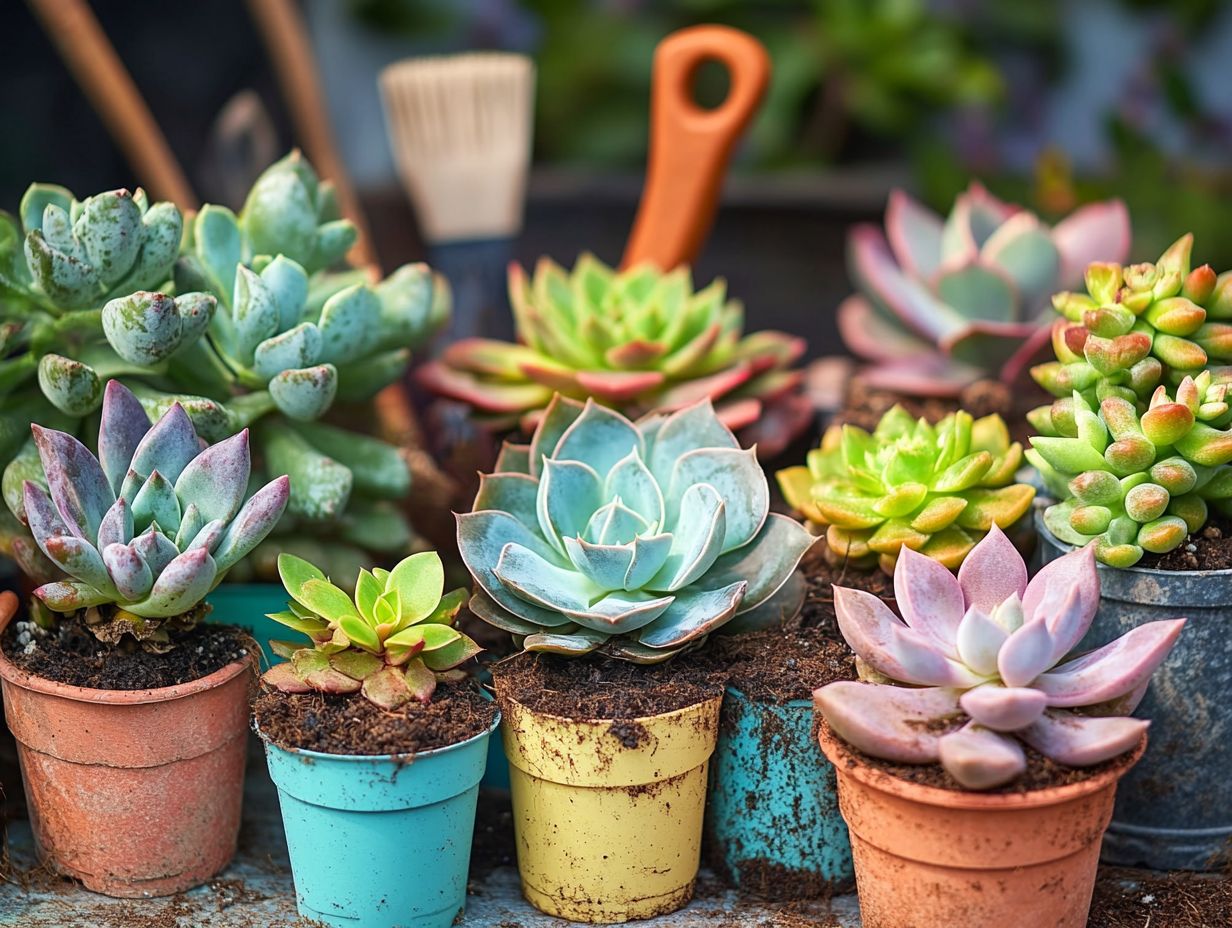
- Find the right watering balance to prevent root rot or dehydration.
- Succulents need bright, indirect sunlight and moderate temperatures. Avoid extreme heat or cold.
- Use well-draining soil and ensure pots have drainage holes to avoid water pooling.
Understanding Succulents
Understanding succulents is essential for indoor gardening enthusiasts eager to master the art of succulent care. These remarkable plants, celebrated for their water-storing capabilities in leaves and stems, come in a delightful array of species, including favorites like aloe, echeveria, and jade plants.
Succulents thrive in various environments, making them perfect whether you’re just starting out or have gardening experience. By grasping the essential principles of succulent care like their water needs, sunlight preferences, and suitable potting soil, you can sidestep the most common missteps in indoor plant care and ensure your plants flourish beautifully for years to come.
What are Succulents?
Succulents are a captivating group of plants, distinguished by their thick, fleshy tissues that store water, making them well-suited for arid climates.
These plants have developed various adaptations, allowing them to survive in low-water conditions. For instance, aloe is renowned for its gel-filled leaves that retain moisture. Echeveria showcases a rosette shape that minimizes water loss, while the jade plant, with its thick, oval leaves, is a testament to resilience.
When selecting varieties, consider factors like sunlight availability and temperature. Experts commonly recommend heat-tolerant succulents for sunny outdoor spaces, while delicate options may be better for indoor environments with indirect light.
Common Mistakes in Succulent Care
Caring for succulents can be rewarding. However, many gardeners make common mistakes that threaten their plants’ health. One prevalent error is overwatering, which can lead to root rot and various diseases.
Inadequate lighting can also hinder succulent growth, making it essential to understand their specific light requirements. With expert tips and a few preventive strategies, you can create the perfect environment for your succulents to thrive.
Overwatering
Overwatering is one of the most frequent missteps in succulent care and often leads to root rot and other health issues.
Recognizing the signs of overwatering is vital. Symptoms such as yellowing leaves, mushy stems, and slow growth may indicate trouble.
Experts recommend monitoring soil moisture levels. Use moisture meters or insert your finger into the soil up to two inches deep to check its condition.
To promote optimal drainage, use pots with drainage holes and a well-draining soil mix that allows excess water to escape.
By following these best practices and adjusting your watering techniques with the seasons, you can ensure your succulents thrive rather than merely survive.
Underwatering
While overwatering tends to steal the spotlight as a common issue, don t underestimate the challenges posed by underwatering in succulent care. This sneaky problem can lead to wilting and stunted growth. It is essential for you to recognize the signs of underwatering to keep your resilient plants flourishing.
Succulents are quite communicative; they often display clear signals such as shriveled leaves, dry soil, and an overall lethargic appearance when they’re not getting enough moisture.
To effectively gauge the watering needs of your various succulent varieties, consider factors like the plant s size, type, and the environment it resides in. Experts suggest that you gradually adjust your watering habits by paying close attention to how quickly the soil dries out after a watering session.
Opting for pots with drainage holes is also a wise move to maintain optimal soil moisture. Establishing a consistent watering schedule is beneficial, yet remain vigilant about seasonal changes that could impact your succulents’ hydration needs.
This careful attention will ensure your plants not only survive but truly thrive in your care!
Improper Lighting and Temperature
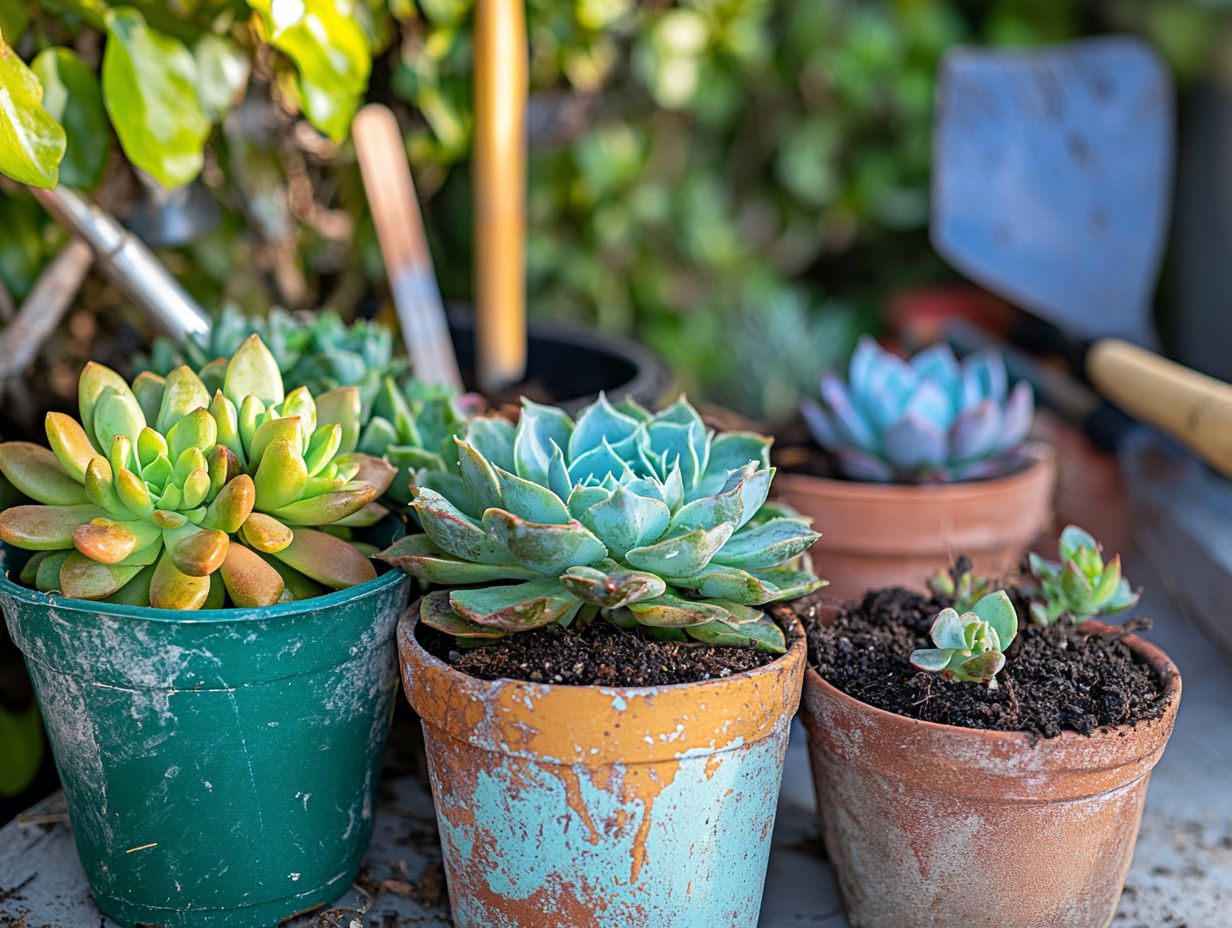
Are your succulents thriving or just surviving? Let s dive into the secrets of succulent care! Succulents have distinct lighting requirements that are essential for their health and growth. Getting the lighting wrong can seriously set them back.
These resilient plants thrive when positioned in bright, indirect sunlight think southern-facing windows as their personal sunbathing spots. The gentle rays filtering through the glass create the ideal intensity for promoting robust photosynthesis, which is the process plants use to turn light into food.
Keep a close eye on temperature fluctuations. Extreme heat or cold can hinder their growth. By maintaining a stable environment, you ensure that your succulent retains its vibrant colors and plump leaves. This contributes to a flourishing indoor garden.
Understanding these light and temperature dynamics can significantly elevate your succulent care experience, transforming it from routine to remarkable.
Choosing the Wrong Soil
Selecting the right potting soil is essential for your succulent care journey. It directly impacts both drainage and moisture retention.
For these drought-tolerant plants, the ideal soil should be well-aerated and designed to quickly drain excess water. This effectively prevents root rot. Your succulents can access the moisture they need without languishing in overly wet conditions that could lead to decay.
To enhance drainage, consider incorporating materials like:
- Coarse sand
- Perlite
- Pumice
Don t overlook the importance of using pots with drainage holes; they play a crucial role in allowing excess water to escape, thereby safeguarding the health of your plants. For optimal results, experts often suggest a 2:1:1 ratio of potting soil, sand, and perlite. This combination creates a breathable environment that strikes the perfect balance between moisture retention and airflow, giving your succulents the best chance to thrive!
Not Providing Adequate Drainage
Don t let your plants suffer ensure proper drainage now! Neglecting adequate drainage in your succulent pots is a critical oversight that can lead to serious issues like root rot.
This fundamental aspect of succulent care is often underestimated, yet it plays a pivotal role in the overall health of your plants. Ensuring that your pots have drainage holes allows excess water to escape, preventing soggy soil that can suffocate roots and promote fungal growth. To further enhance your propagation skills, avoid the top 7 mistakes in indoor plant propagation.
Many individuals inadvertently select decorative containers without realizing they lack these essential features. By implementing strategies such as adding a layer of gravel at the bottom or choosing self-draining pots, you can significantly enhance your water management.
Understanding these simple techniques will help you create an optimal environment for your hardy plants to flourish.
Using the Wrong Fertilizer
Using the wrong fertilizer can seriously impact your succulents’ health. This can lead to nutrient deficiencies and stunted growth.
To cultivate vibrant, thriving plants, it s essential to choose fertilizers specifically designed for succulents. Look for an even mix of nutrients, like a 5-10-10 NPK blend (NPK stands for nitrogen, phosphorus, and potassium, the three essential nutrients for plants). Experts suggest fertilizing during the growing season typically spring and summer when your succulents are actively soaking up those crucial nutrients.
Just a word of caution: over-fertilization can cause root burn. Dilute the fertilizer even more than what the package suggests.
Keep an eye out for signs of nutrient burn, such as wilting or discoloration. This vigilance can help you avoid common pitfalls and promote optimal growth in your beloved succulents.
Not Pruning Correctly
Pruning succulents is crucial for preserving their health and aesthetic appeal. Yet, it s a task that many gardeners often overlook.
This oversight can lead to plants that are too crowded, suffering from reduced air circulation, and becoming more vulnerable to pests and diseases.
To prune succulents effectively, start by using clean, sharp tools for precise cuts. Focus on dead or damaged leaves and any leggy growth. It s best to prune during spring or early summer when your plants are actively growing, as this facilitates quicker recovery.
Keep in mind that each succulent variety may have its own specific needs. For instance, rosette types benefit from light trimming, while trailing varieties might require more substantial cuts to encourage a bushier appearance. Regular care of the foliage, including gentle cleaning and monitoring for signs of stress, is essential, especially to avoid common watering mistakes, which will help you maintain vibrant, healthy succulents.
Ignoring Pests and Diseases
Ignoring pests and diseases in your succulent garden can lead to considerable issues that impact both the health of your plants and their visual appeal.
Consider the common culprits: mealybugs, aphids, and spider mites. These pests can swiftly take over even the hardiest succulents, making it imperative for you as a succulent enthusiast to remain vigilant.
Don t wait! Inspect the foliage regularly for any signs of distress, like discoloration or webbing. Experts advocate for using natural deterrents such as neem oil or insecticidal soap to effectively manage any infestations you encounter.
Beyond pests, fungal infections and root rot pose significant threats, especially when overwatering becomes a concern. To avoid these issues, it’s important to learn about the top 7 mistakes in watering indoor plants. Ensuring proper drainage and conducting timely soil checks are essential practices to maintain healthy conditions, allowing your stunning succulents to flourish.
Tips for Proper Succulent Care
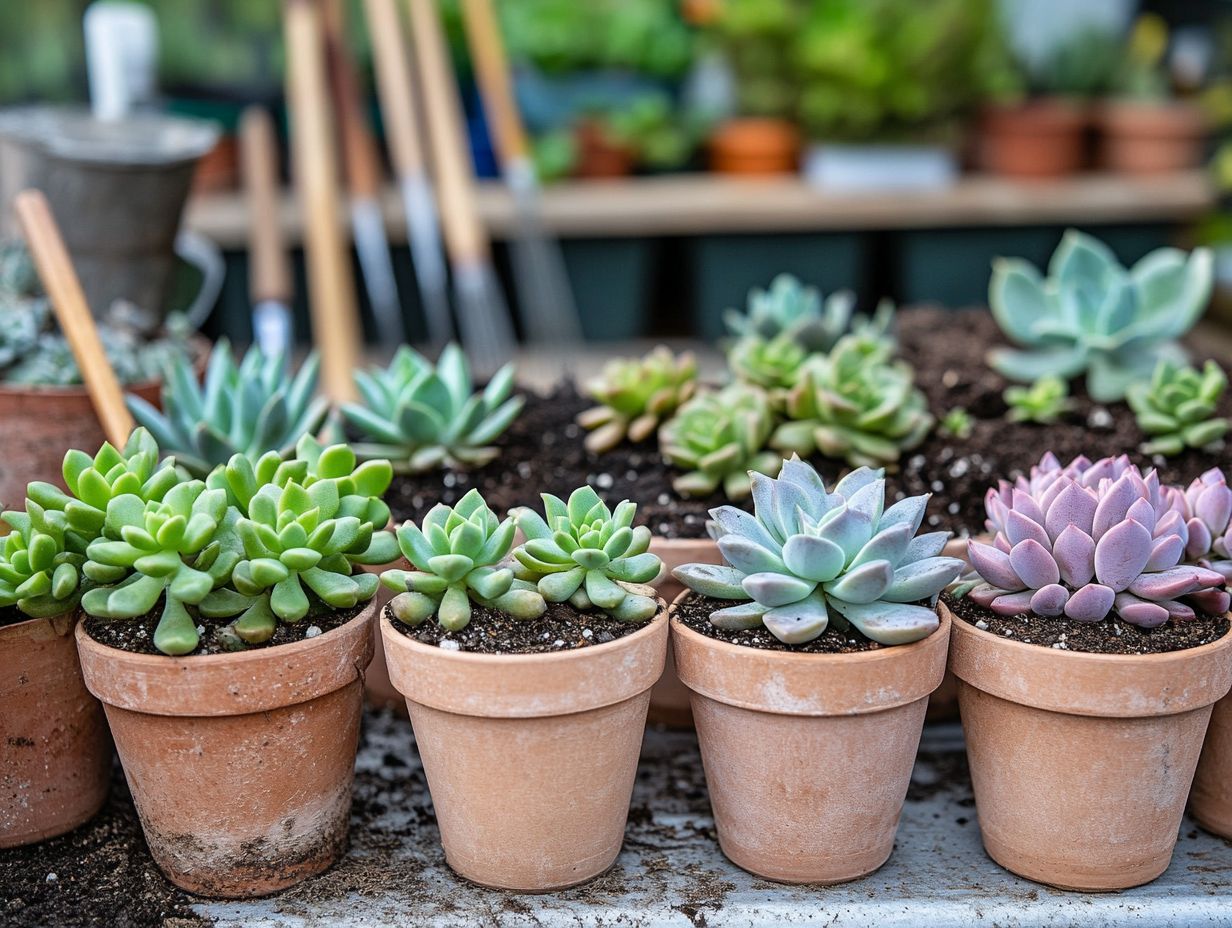
Proper succulent care requires you to master a blend of effective watering techniques, keenly understand light conditions, select the right soil and fertilizer, and engage in regular pruning to ensure your plants thrive in optimal health.
Watering and Drainage Techniques
Effective watering and drainage techniques are crucial for ensuring your succulents thrive and avoiding common pitfalls like overwatering.
To keep your succulents vibrant and healthy, adopting a consistent watering schedule is essential, typically every two to three weeks, depending on the season and your environment. Remember, these plants flourish in dry conditions, so checking the soil moisture is key. A simple finger test can quickly tell you if the soil needs hydration. Additionally, be aware of common mistakes in indoor plant pest control to keep your succulents thriving.
Be mindful of common mistakes like watering too frequently or letting your plants sit in waterlogged soil. These can lead to root rot. It s vital to use well-draining soil and pots with drainage holes to promote adequate drainage, ensuring your succulents get just the right amount of moisture for optimal growth.
Join the succulent care community and share your experiences!
Lighting and Temperature Requirements
Understanding the lighting and temperature requirements for succulents is essential for their successful growth and overall health.
These resilient plants thrive in bright, indirect sunlight. Creating an environment that mirrors their native habitat is key. Aim for around six hours of light each day. Be cautious too much direct sunlight can cause sunburn.
Maintaining an ideal temperature, typically between 60-80 F, while keeping humidity levels low is crucial. Use well-draining soil to prevent root rot, and regularly check moisture levels to ensure a perfect balance for healthy growth.
This simple step allows your succulents to flaunt their vibrant colors and unique shapes!
Choosing the Right Soil and Fertilizer
Selecting the right soil and fertilizer is essential for the health and longevity of your succulents. This effectively prevents nutrient deficiencies.
These remarkable plants thrive in well-draining environments. Use a soil mixture that incorporates coarse sand, perlite, or pumice. For convenience, consider a commercial cactus or succulent mix, which includes these beneficial components. To avoid common issues, refer to indoor plant care mistakes and solutions. If you prefer a hands-on approach, blend standard potting soil with sand or gravel for outstanding results.
For fertilization, apply a diluted liquid fertilizer during the growing season. This encourages vibrant growth without overwhelming your drought-resistant friends. Understanding the specific needs of each succulent type enhances their vitality, allowing you to cultivate a stunning collection.
Pruning and Pest Management
Pruning and effective pest management are critical practices in succulent care. They significantly contribute to the health of your plants.
These methods not only elevate the visual appeal of your succulents but also enhance air circulation and sunlight exposure both vital for their growth. Regularly trim away dead or diseased leaves to prevent the spread of pathogens, ensuring your plants remain vibrant and thriving.
Stay vigilant against pests like mealybugs (small white insects that damage plants) and aphids (tiny bugs that suck plant sap). Use methods to control pests, such as neem oil or insecticidal soap, to minimize their impact.
By embracing these expert recommendations, you can cultivate a resilient plant environment that withstands potential threats. This ultimately leads to healthier, more lush arrangements.
Frequently Asked Questions
What are some common mistakes when caring for succulents?
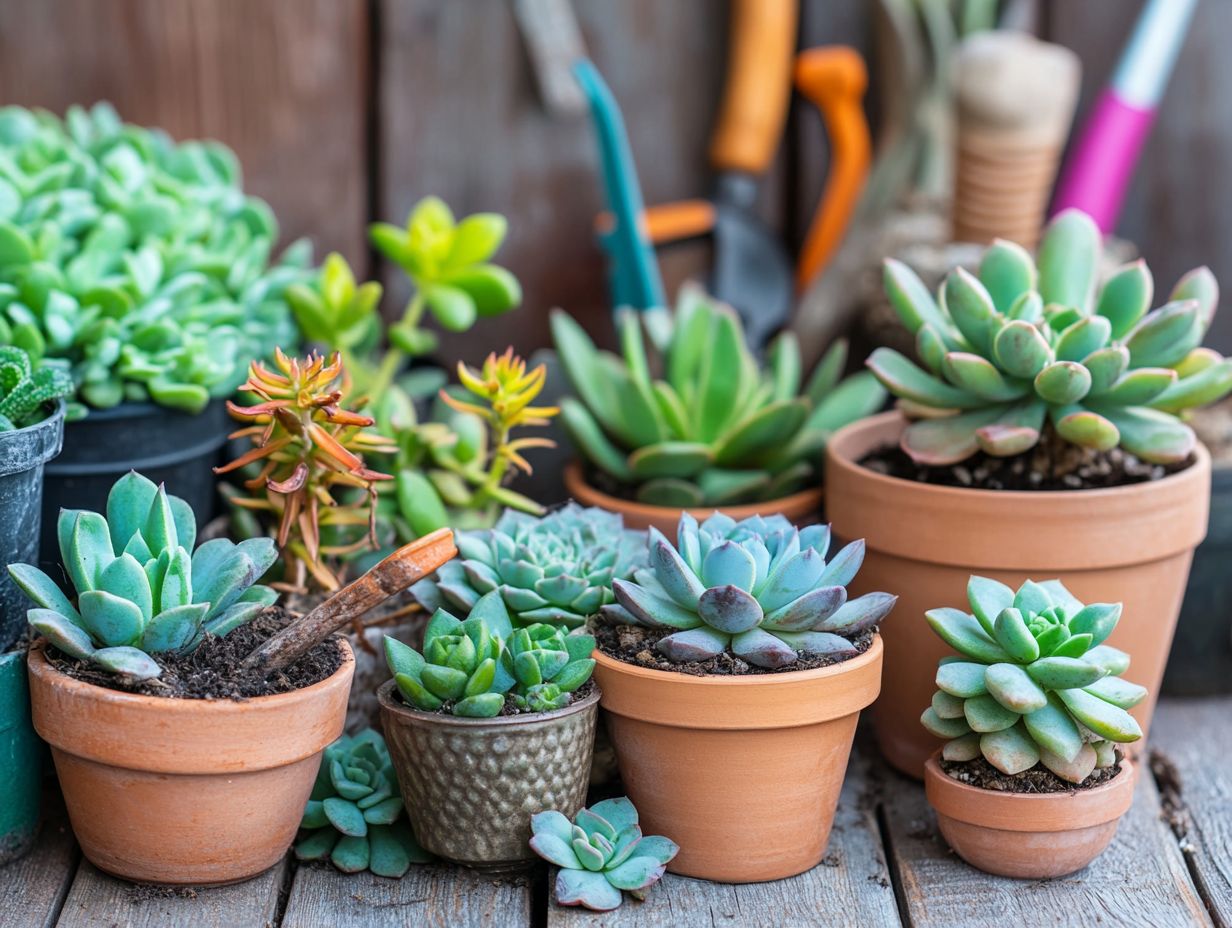
Common mistakes when caring for succulents include:
- Overwatering
- Using the wrong type of soil
- Not providing enough sunlight
- Not repotting when necessary
How often should I water my succulents?
Succulents are drought-resistant plants. Water them only when the soil is completely dry, usually once every 1-2 weeks, depending on the environment.
Can I use any type of soil for my succulents?
No, succulents require well-draining soil to prevent root rot. Regular garden soil is not suitable. It is best to use a special succulent or cactus mix, or create your own by mixing sand, perlite, and potting soil.
Why are my succulent leaves turning yellow?
Yellowing leaves on succulents often indicate overwatering. Let the soil dry completely between waterings to avoid root rot and yellowing leaves.
Do succulents need a lot of sunlight?
While succulents need sunlight to thrive, they can get sunburned if exposed to too much direct sunlight. Provide them with bright, indirect sunlight for a few hours a day.
When should I repot my succulents?
Repot succulents when they outgrow their current pot or when the soil becomes too compacted. Signs include roots coming out of the drainage holes, stunted growth, and yellowing leaves.

